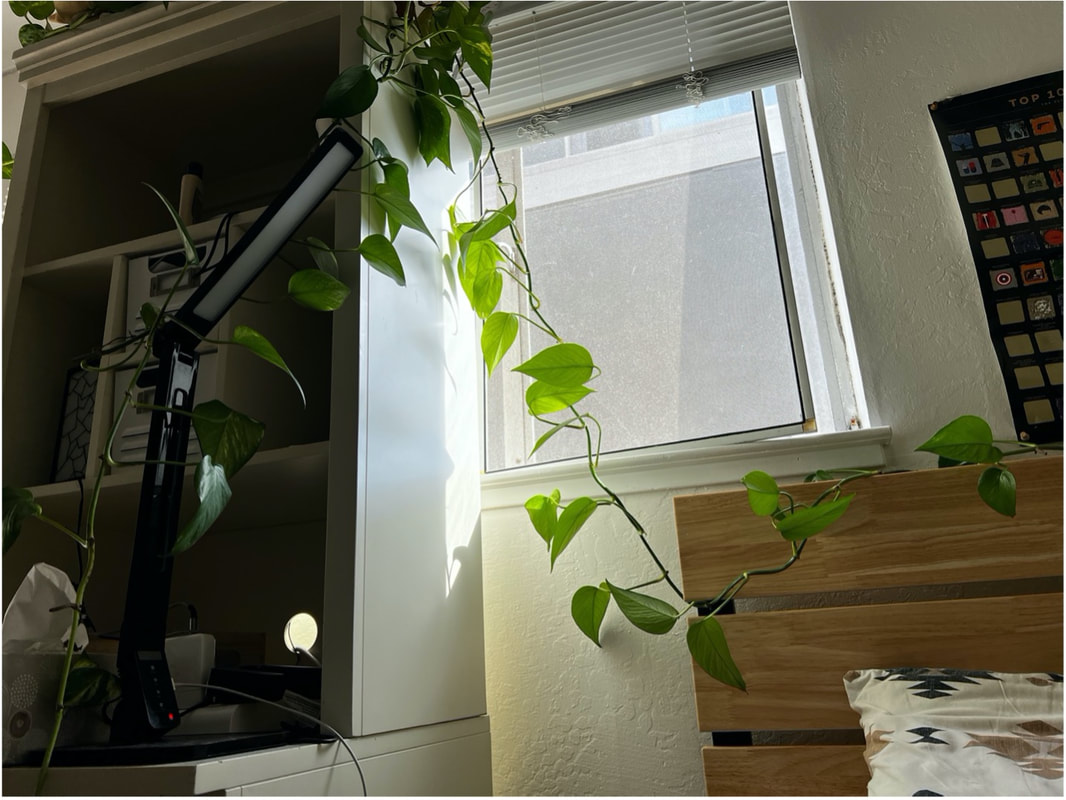|
by Lucas Fink What is it to be gentle? What makes someone, something, or some act gentle? I think gentleness could be said to entail an exploratory hesitance, a tentative curiosity, a desire to know the object tempered by a hyperawareness of the object’s rich affective life-world. A desire to approach and wrap around and feel without disturbing. I might have been wrong to say “know the object”, at least insofar as knowing/looking are extractive operations and are therefore operations that always disturb, that always condemn the object to legibility. Moten and Harney on hapticality might be helpful here. For them, hapticality is not merely a more capacious account of common feeling, and is therefore not a brutal liberal appeal to the universality of human affects and experiences. Hapticality does not designate any one emotion or collective emotional circumstance; rather, hapticality is the act of feeling someone else feel you (Moten & Harney 98), a feeling through the other. Hapticality is love, then. Gentleness is a mechanism of love, for the hyperawareness of the object’s rich affective life-world prompted in and by the caring apprehension of gentleness is the condition of possibility for hapticality/love in the first place. The awareness that the object has/is a life-world, that I also have/am a life-world, that I am also an object (for you), and that finally the boundary between our two life-worlds is porous at best and phantasmatic more likely. Gentleness, finally, is this slow, sensitive movement through the world of things, a movement motivated by the desire to caress and to be-with always already contextualized by an awareness of the multiplicity of desires out there in the world of things blossoming beyond you. A sub-genre of empathy, a desire to experience alterity without rocking the boat, without violently imposing the Self over and above it.
The vine next to my bed has been growing steadily for the past 3-ish years. At some point in those last three years, I tucked the vine under a wooden plank in my bed frame and let it continue growing over and on top of the frame. It has now arrived at the other end. The plant’s other vine drapes lazily down over my reading light and tissue box. What interests me most about the modality of movement these vines instantiate is the interplay (I’m sorry but I like that buzzword better than dichotomy) between their exploratory eagerness and receptivity to my guiding their exploration. Wherever I let them hang, whatever I wrap them around, the vines will – with a Mediterranean lethargy – happily come to know the room’s spatial specificities (as long as they get light). Am I circumscribing their exploration more than merely guiding it? Maybe. Am I harvesting from this plant the earthen eco vitalist aesthetic its appearance lends? Or is it enlivening my apartment bedroom pro bono, imposing on me a debt I can never hope to repay? Anyway, unanswerable questions. What is in fact certain at this point is that the vines are gentle. Does a thing have to be alive to be gentle? Does it have to move (so it can move slowly)? More unanswerables. Obviously this picture fails to capture the vines’ gentleness because pictures cannot capture movement (absenting maybe time-lapse photography and such). You can see the history of its movement, though, the trail it took to get where it is now, the little gap between boards where I notched it, the suggestion of an infinite vine produced by the visual omission of the vine’s terminus at the other edge of my bed. I guess its movement is there, then, as a trace. Again, though, does gentleness necessarily imply (slow) movement? If a thing moves, does it need to move slowly for it to be called gentle? Life-saving CPR isn't very slow, nor would most of us call it gentle. It's life-saving, though. Odd. Lots of things move, though. Architecture moves: a pillar moves into a cornice moves into a cupola moves into a weather vein. Movement need not bear any easily legible, linear temporal orientation. This is why I love this plant: it goes, just not forward. It goes around and loops and dives and extends, but never goes forward, nor backwards. A movement without a telos. It just wants to feel. I love the way the sunlight plays with the leaves and their shadows. Were the shadows already there, hiding under the leaves, waiting for the sunlight to arrive?
0 Comments
|
Archives
March 2024
Writers
All
|
